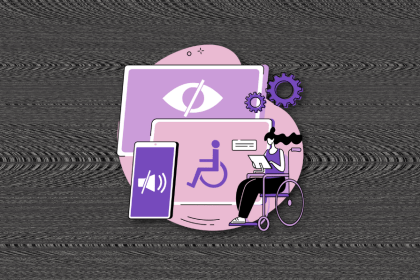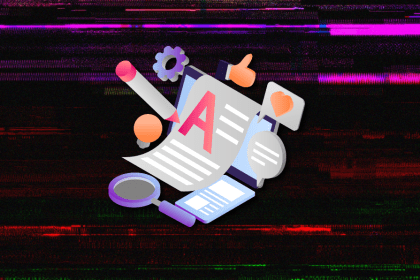The more experienced I become, the more I realize what actually differentiates great designers from average ones. I used to believe that skillset and experience were the ultimate factors in determining a designer’s success. While they undeniably play a role, they aren’t the primary differentiators. What truly sets top designers apart is the process — the structured, intentional approach they take to solving problems, collaborating with others, and iterating on their work.

Put an averagely skilled designer in an optimized environment with a great process, and they’ll produce better outcomes than a skilled designer working in chaos.
That’s why DesignOps — the art and science of continuously improving the design process — is so important.
Editor’s note — In this updated version, Bart Krawczyk shifts the focus from defining DesignOps to practical strategies for making it work. Instead of just covering what DesignOps is, Bart dives deeper into how to implement it effectively, helping you optimize workflows, improve team collaboration, and build a strong design culture. Whether you’re a solo designer or part of a large team, these insights will help you refine your process and deliver better outcomes.
DesignOps is the practice of refining and enhancing the operational aspects of design teams to improve efficiency, collaboration, and impact. It focuses on four key areas of design operations:
Great design is an outcome of a great process. The journey from concept to handoff needs to be efficient but rigorous. On the one hand, reducing unnecessary steps improves speed and agility. On the other, incorporating key checkpoints ensures consistency and quality.
Mapping out an intentional, repeatable process helps teams:
Great designers should have access to great tools. From managing Figma access and maintaining user research platforms to ensuring smooth operations with session recording tools, prototyping software, and collaborative whiteboard apps, you must make sure your people have the right tools to get the job done effectively.
It’s hard to get a higher ROI than investing in the design system. The ability to pull from a library of components when designing new screens saves hours. Every single day. Keep your design system healthy at all times.
If a full-fledged design system is too much for your company, maintaining a style guide can still provide significant benefits.
Talent management
Attracting, recruiting, and training the right people is essential to scale the organization and maintain high-quality output. Everything becomes easier if you have strong designers working with you.

Even though some companies have dedicated roles and even whole departments, you don’t need that scale to practice DesignOps.
It’s more about building a culture of continuous improvement. You’d want to constantly work on
If you invest time each week to review processes, refine practices, and maintain key tools, you will help achieve that.
If you have the budget, getting a dedicated DesignOps specialist can help, but that’s not a requirement. Just dedicate some time every week, focusing purely on analyzing the current design process and culture, and figuring out what the most valuable improvement you should introduce. You can do that alone or engage the team as a whole.
Ultimately, DesignOps is about consciously improving the design practices within the organization, not necessarily about job titles.
Now that we’ve covered the basics, let’s dig into practical strategies for improving the efficiency of your design process:
Designing the design process doesn’t differ much from designing the user experience.
Your design team is your target audience. You need to understand their challenges and pain points — just like you would for users.
Ideally, embrace continuous discovery habits, that is:
Pro tip — Ask every designer what their biggest bottleneck is. This question often leads to the most valuable insights.
Design is inherently messy. You can start handling a particular task from twenty different starting points, and all of them would be technically correct. But if every designer picks a different approach, it’s hard to maintain a cohesive quality of outcomes, let alone improve on it.
You don’t need to script every single step a designer should take, but you should outline:
This structured approach will later help you spot which steps are the biggest bottlenecks and what you need to do to improve them.
In an ideal world, the design system is constantly evolving and being updated with new design choices. But then, life happens, and we often forget/procrastinate on maintaining it.
What often helps is doing periodic check-ins. In one company I worked for, we invested one week every quarter reviewing the design system, that is:
You don’t have to go as far as to invest in a sprint every quarter. Depending on the size of your design system and how often the design system changes, as little as a few hours a month might be more than enough.
Automate whatever you can. Automation tools can help you generate design documentation, recruit user interview participants, and even prepare handoff files.
At every step of your process, ask yourself, “Can this be automated?” If you’re unsure, research. You’ll be surprised how much can actually be automated in the era of agentic AI.
Too often, I see companies hiring too many junior designers, hoping it’s going to be cheaper, or hiring mostly senior designers, hoping they’re going to be more effective.
Well, juniors don’t have the skills and expertise needed to handle complex and difficult challenges effectively. Seniors, on the other hand, can quickly get bored if you force them to work on easier and more mechanical tasks.
And you need both. Strong seniors drive the design process and solve complex challenges, relying on juniors to handle the easier tasks.
The exact ratio of junior to senior designers depends heavily on your particular context. One junior for every two or three more senior designers is usually a good start.
Great design doesn’t happen in a vacuum. You’ll need to bridge any gaps between designers, developers, and product managers. And to do that:
Establish rituals like design critiques, sync meetings, and other feedback loops:
You need to find a balance between syncing often enough to ensure the collaboration is smooth, yet not drowning everyone with meetings. Two things that I found work surprisingly well are:
Document handoff processes and expectations for design-to-engineering delivery:
Handoff is often treated as the last step of formality. It kinda is, but still, it has an enormous impact on how fast the feature will get delivered, and how much further sync and alignment will be needed during development.
Sometimes it’s better to spend literally a week doing a proper handoff rather than spending twice as much time fixing misalignments.
A structured process can only take a team so far — it needs to be supported by a strong design culture.
Counterintuitive as it might sound, I’ve discovered that the best tool to build culture in design teams is to have a couple of recurring meetings. These allow you to get the whole team together (which builds a sense of unity) to work on an interesting and inspiring topic, which then can spark further conversations between team members.
My favorite culture-building meetings are:
Find some activities that are both valuable and fun for your team, and scale them as cultural cornerstones.
I’m a big fan of proper processes, tooling, and libraries — but we need to leave some breathing room for the teams. Too much standardization can stifle creativity.
Over-standardization often looks like:
Design is still a creative field. If you limit your people with step-by-step instructions on how to do things and what elements to use, you will not only burn them out but also miss out on many interesting insights and concepts they’d bring you if they had more space to explore on their own.
Your design process should guide people on a high level on how they should approach topics to maintain cohesion within the organization. But it should be flexible enough that everyone can test things out on their own and work in the way that works best for them.
Guidelines and best practices > instructions!
I’d rather have a group of OK designers working as a team with a strong culture and process rather than a couple of disintegrated senior designers. A good process can improve your outcomes tremendously.
Embracing DesignOps is all about that. Whether you set up a dedicated unit for that or invest a bit of everyone’s time every month, sharpening the axe every now and then when cutting down the forest can help you tremendously.
Just remember:
And the key is balance — structure where it’s needed, flexibility where it counts.
LogRocket's Galileo AI watches sessions and understands user feedback for you, automating the most time-intensive parts of your job and giving you more time to focus on great design.
See how design choices, interactions, and issues affect your users — get a demo of LogRocket today.

I’ve spent enough time designing with WCAG 2.2 to know it’s not enough. Here’s why I’m skeptical and cautiously hopeful about WCAG 3.0.

I learned this lesson the hard way. Good UX doesn’t survive endless approval loops. Here’s what went wrong — and how to protect your vision.

I’ve reviewed “final” designs more times than I can count — and the copy almost always gives users a reason to hesitate.

The checkbox is one of the most common elements in UX design. Learn all about the feature, its states, and the types of selection.